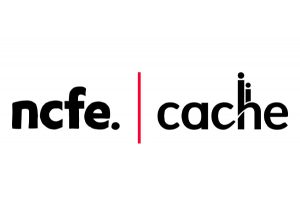Overview
The aim of the Level 5 Diploma for the Early Years Senior Practitioner qualification is to support leadership and management skills in the early years and the knowledge and skills relating to the early years practice.
The Early Years Senior Practitioner will be a positive role model for the team. Through clear leadership and effective management, the Senior Practitioner will support and promote best practices within legislative requirements to enable quality provision. Working collaboratively with colleagues, other professionals, and parents/carers the Senior Practitioner engages and motivates all involved for improved outcomes for babies and children.
The areas covered in this qualification include:
- quality environments
- early years pedagogy
- behavior
- care routines
- professional development
- Special Educational Needs and Disability (SEND)
- Safeguarding
- Inclusion
- Development
- play for learning
- partnership working
- the Early Years Foundation Stage (EYFS)
- leading and managing
- health, safety, and well-being
roles and responsibilities.
Delivery Methods
Austorah Tayba Education in association with its partner college based in London provides various flexible delivery methods to its learners which include blended learning, online learning, distance learning, and In-class learning. The learners can choose the mode of study as per their choice and convenience.
Learners are able to:
- Access All course materials, including online modules and written assignments
- Gain Teacher support
- Access our partner college online portal (24/7 access to our user-friendly learning portal)
- Acquire Assignments briefing
- Receive Excellent quality of study notes
- Obtain Assignment marking and feedback
- Access Free Online library.
- Gain Fully accredited UK courses
- Receive Dedicated customer support via chat, telephone, and email (Monday to Friday)
- Gain Full support until the completion of the course
Accreditation
NCFE/ Cache Ofqual regulated awarding body

Duration
The programme is available in 2 duration modes:
Course Delivery
Entry Requirements
Learners should be age 18 and above. It is also recommended to have Level 2 in English and Mathematics.
Do you need to be working to take the qualification?
Learners need to show competence in both knowledge and skills. In order to study for the Level 5 Diploma for the Early Years Senior Practitioner, learners will need to be working in the role of Leader, Deputy or Manager in an appropriate setting, or have the opportunity to carry out the responsibilities associated with these roles.
Assessment
Learning. EYSP 2 and EYSP 12 must be assessed using an externally set and internally marked task. A range of methods can be applied to other units, which could include direct observation of practice, professional discussion, work product or a portfolio of evidence.
Module Structure
To gain this qualification, learners must achieve a total of 90 credits from all 18 mandatory units.
This section includes mandatory assessments of learning, which identify how learners’ work will meet the requirements of each unit. There are also examples of what could be included as portfolio evidence. EYSP 2 and EYSP 12 have specified mandatory approaches to assessment; please refer to the Assessment of Learning for more guidance around these two units.
| Unit title | Unit type | Level | Credit |
| Manage care routines for children | Knowledge/ Skills | 5 | 5 |
| Lead practice in promoting the well-being and resilience in children | Knowledge/ Skills | 5 | 7 |
| Model positive behavior in the early years | Knowledge/ Skills | 5 | 5 |
| Lead activities, experiences, and educational opportunities to promote children’s speech, language and communication | Knowledge/ Skills | 5 | 5 |
| Lead children’s early education and development | Knowledge/ Skills | 5 | 4 |
| Understand holistic child development from birth to 7 years | Knowledge | 5 | 6 |
| Developing children’s emergent literacy skills | Knowledge/ Skills | 3 | 3 |
| Developing children’s emergent mathematical skills | Knowledge/ Skills | 3 | 4 |
| Develop and implement policies and procedures to support the safeguarding of children | Knowledge/ Skills | 5 | 6 |
| Develop health and safety and risk management policies, procedures, and practices in Early Years Settings | Knowledge/ Skills | 5 | 5 |
| Champion equality, diversity, and inclusion | Knowledge/ Skills | 5 | 4 |
| Supporting children with Special Educational Needs and Disability in an Early Years Setting | Knowledge/ Skills | 4 | 8 |
| Work in partnership in Early Years Settings | Knowledge/ Skills | 4 | 4 |
| Lead and manage a team within an Early Years Setting | Knowledge/ Skills | 6 | 7 |
| Develop, maintain, and use records and reports | Knowledge/ Skills | 4 | 3 |
| Quality provision in Early Years Settings | Knowledge/ Skills | 6 | 5 |
| Promote professional development | Knowledge/ Skills | 4 | 4 |
| Review own knowledge of learning and development for early years practice | Knowledge/ Skills | 5 | 5 |
Progression
It is anticipated that learners will be able to progress within the Early Years Workforce or to higher education in a relevant subject area.
Who is it suitable for?
The aim of the Level 5 Diploma for the Early Years Senior Practitioner qualification is to support leadership and management skills in early years and the knowledge and skills relating to early years practice. This qualification is suitable for learners already working in the early years sector in a managerial role, as well as learners that may wish to develop their career or increase their understanding through professional development.
Learners undertaking the qualification would be working in job roles such as:
- Manager
- Deputy Manager
- Room Leader/Supervisor
- Leader with designated area
Upon successful completion, learners can work as a Senior Early Years Practitioner within the Early Years Workforce across the private, voluntary, and independent sectors, or progress to higher education in a relevant subject area.




Mark Jack
22 April, 2022Lorem ipsum dolor sit amet, consectetur adipiscing elit, sed do eiusmod tempor incididunt ut labore et dolore magna aliqua. Ut enim ad minim veniam, quis nostrud exercitation ullamco
Alexa Deo
26 April, 2022The purpose of lorem ipsum is to create a natural looking block of text (sentence, paragraph, page, etc.) that doesn't distract from the layout. A practice not without controversy, laying out pages.
Tara sing
26 April, 2022The passage experienced a surge in popularity during the 1960s when Letraset used it on their dry-transfer sheets, and again during the 90s as desktop publishers bundled the text with their software.